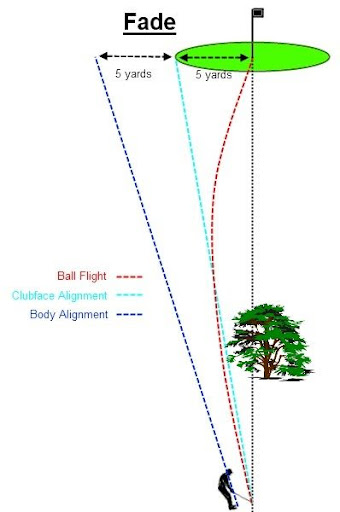Svenster
New
First Post.
Hi all, I've been lurking on the forum for the last few months (yep, love it) and finally decided to register and post.
I'm still a little fuzzy on how one utilizes D-Plane knowledge on the course from an aim the clubface, setup/alignment and swing left or right perspective.
I get (I think) that with a driver one sets the clubface right of target and then swings right-er, with a 3 wood it's clubface and swing "right down Main Street", and as the clubs get shorter the clubface is set left-er of target and the swing gets even more left-er.
I've been trying out these tactics on the course lately with fair to middling results.
What I'm not sure of is exactly how much to aim the club face left or right depending on the shot (distance) and then how to align my feet and then my hips and shoulders when setting up to swing.
For the driver should my feet be set up for a draw (and for shorter clubs a fade) and my hips and shoulders aligned to my feet, my clubface or the target? Once set up properly for whatever club I'm using is my swing supposed to change to fit the shot (i.e. swing more in to out or out to in) or should my swing remain the same for all shots?
Sorry if I'm being overly simplistic but when it comes to golf I really need things dumbed down to the bare essentials, esp. if I hope to "keep it in mind" while I'm on the course.
P.S. I'm a lefty but have purposely written the above in "right-ese".
Thanks in advance.
Hi all, I've been lurking on the forum for the last few months (yep, love it) and finally decided to register and post.
I'm still a little fuzzy on how one utilizes D-Plane knowledge on the course from an aim the clubface, setup/alignment and swing left or right perspective.
I get (I think) that with a driver one sets the clubface right of target and then swings right-er, with a 3 wood it's clubface and swing "right down Main Street", and as the clubs get shorter the clubface is set left-er of target and the swing gets even more left-er.
I've been trying out these tactics on the course lately with fair to middling results.
What I'm not sure of is exactly how much to aim the club face left or right depending on the shot (distance) and then how to align my feet and then my hips and shoulders when setting up to swing.
For the driver should my feet be set up for a draw (and for shorter clubs a fade) and my hips and shoulders aligned to my feet, my clubface or the target? Once set up properly for whatever club I'm using is my swing supposed to change to fit the shot (i.e. swing more in to out or out to in) or should my swing remain the same for all shots?
Sorry if I'm being overly simplistic but when it comes to golf I really need things dumbed down to the bare essentials, esp. if I hope to "keep it in mind" while I'm on the course.
P.S. I'm a lefty but have purposely written the above in "right-ese".
Thanks in advance.


